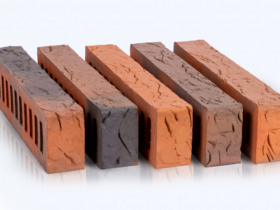Facade paint (14 kg) Cover – an acrylic mixture different from other types of coloring substances. Intended for work not only on the outer side of the buildings, but also for decorating wet rooms. It has atmospheric resistance, resistance to freezing and does not change its color under the influence of ultraviolet radiation.
It is easily applied, but at the same time, it is firmly held on the basis of the addition of polyacrylate – polymeric acid compounds of acrylic acid. Does not harm the environment, is harmless to people working with it. Facade paint on concrete calmly tolerates detergents and cleaning (not abrasive) products.
Facade acrylic Cover paint can be applied both manually, through painting brushes and rollers, and mechanically – a spray gun, for example. Bases on which facade paint can be applied to concrete should be clean and durable. The paint is easily in contact with the formation of a durable cover also with cement-sand stucco mixtures, brick surfaces, with gypsum, and even with a tree.
In order to prepare the facade acrylic paint to work, no substances need to be added. After opening the container (plastic bucket), the mixture is ready for use. If it seems to be thickened, mix it. Due to its thixotropic, the paint with mechanical exposure will again acquire the necessary consistency.
Despite the fact that the paint itself is immune during operation to the effects of nostless temperatures, the process of applying it to the base should begin only when the surrounding air and the base itself acquires a temperature not lower than +5 ° C. Only in this case can polymer molecules can marked with the surface. In addition, water, which is a solvent for acrylic dispersion at temperatures below 0 ° C freezes.









